I’ve spent many hours watching Rough-legged Hawks hunt. Nearly always they hunt from the air or from elevated perches but several years ago this bird showed me a technique I had never seen before and haven’t since.
All of these images are presented in the order they were taken.
Techs for these shots were: 1/2000 – 1/3200, f/8. ISO 400, 500 f/4, 1.4 tc, natural light, not baited, set up or called in
I found the hawk on the ground and as I approached it in my pickup it didn’t fly off as I expected it would. Here it’s looking at me but most of the time it was scanning the grasses in the vicinity – obviously hunting for voles from the ground.
It would lift off but only fly a few feet before it landed again.
In this first lift-off it had vegetation in its talons. I’ve seen them do this before – it’s almost like they’re reluctant to let go of the plant material after they’ve missed the prey.
The hawk landed again…
And intensely scanned the surrounding area for prey.
Then another take-off…
and it flew within inches of the ground…
before it pounced on a vole and swallowed it.
Then it continued to hunt in the same manner.
Another take-off…
and another. There’s blood on the right foot from the last vole.
The hawk repeatedly did the same thing – take off…
and fly very slow and low for a few feet…
and then pounce on potential prey again.
I photographed this unusual hunting behavior of the bird for 21 minutes but that first vole is the only one I saw it catch.
One possible explanation: research suggests that Rough-legged Hawks may be able to visually detect vole urine and feces and then preferentially hunt in areas of high prey abundance. When researchers spread straw that had been soaked with vole urine and feces these hawks hunted significantly more in areas where the straw had been spread than they did in control areas. Perhaps this hunting technique gave the bird a better closeup look as it (possibly) searched for urine and feces evidence of its prey than it would get from a much higher and more typical vantage point for the species.
Whatever the reason for the behavior it surely was an interesting 21 minutes for me.
Ron


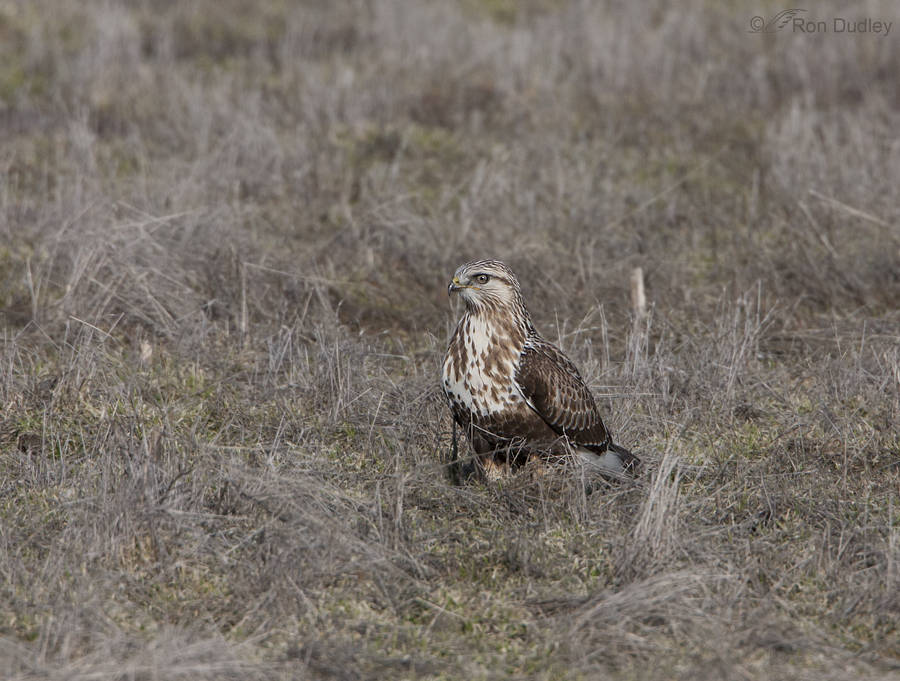
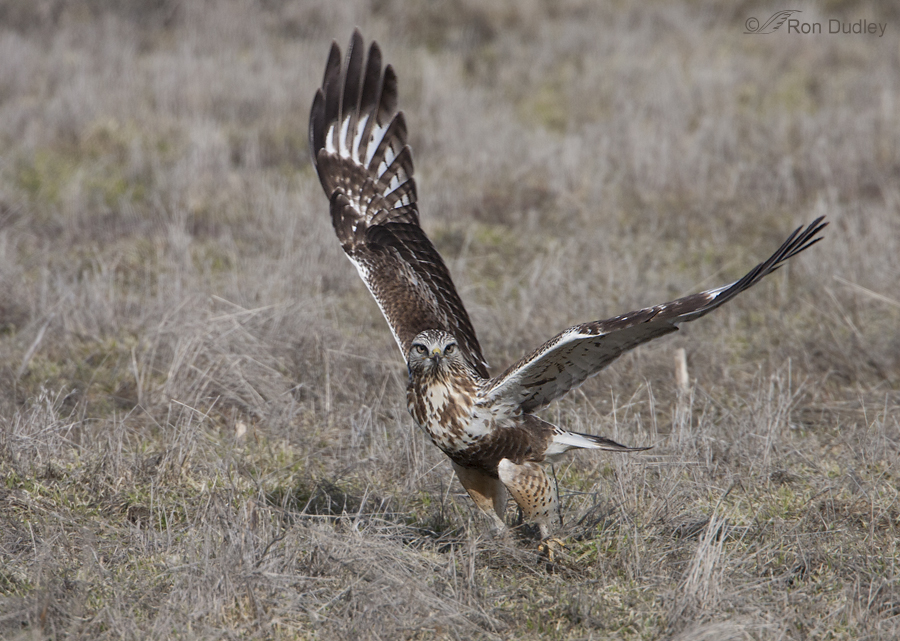
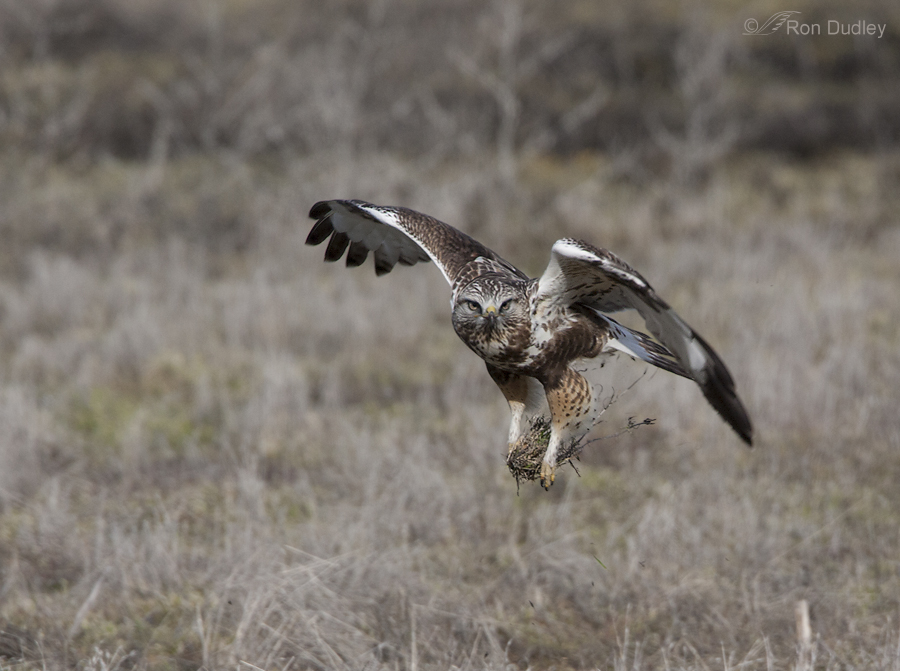
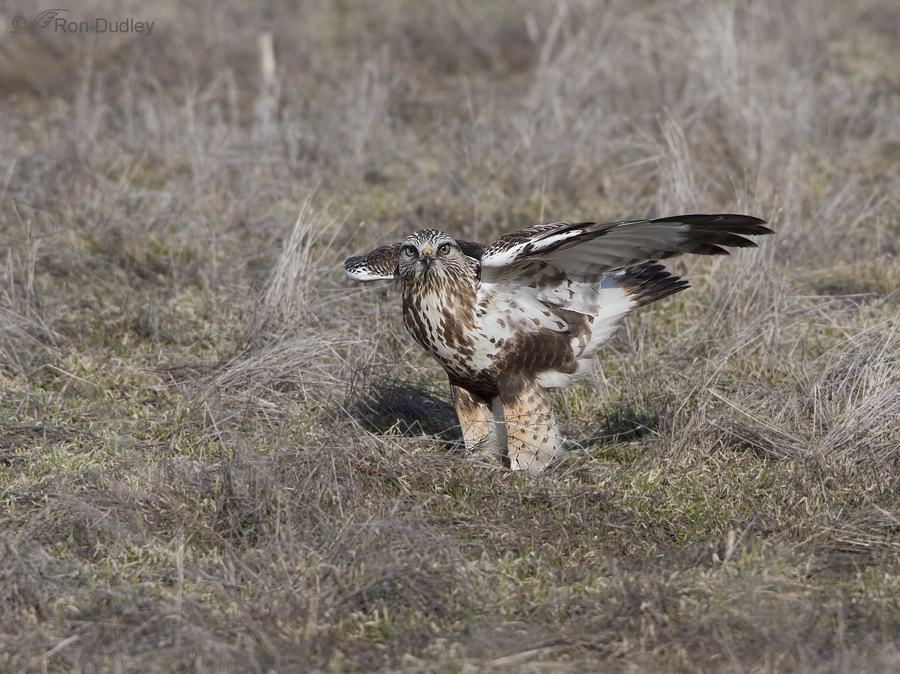

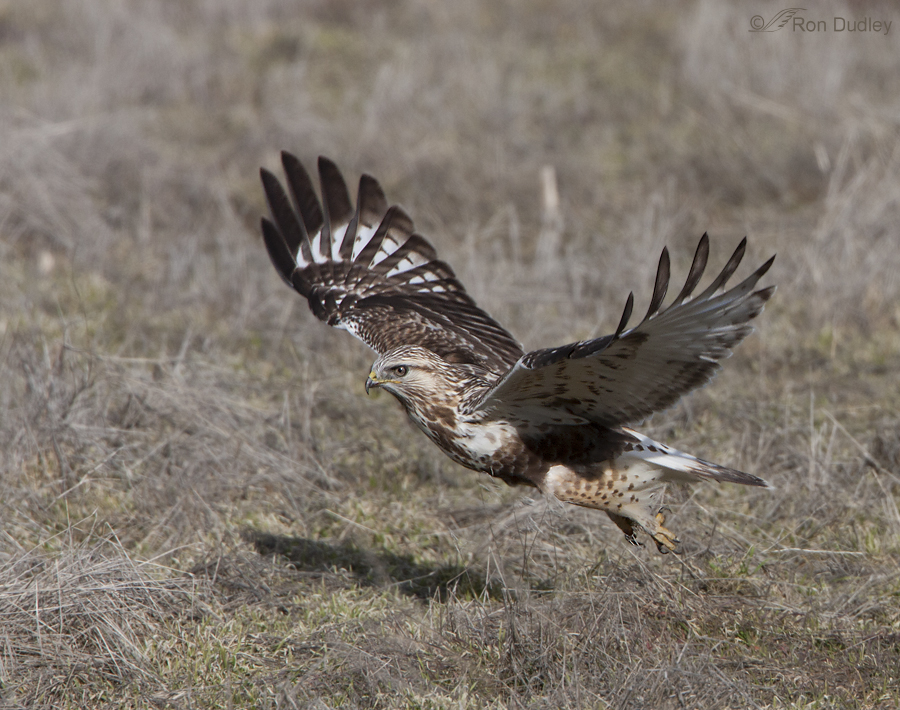
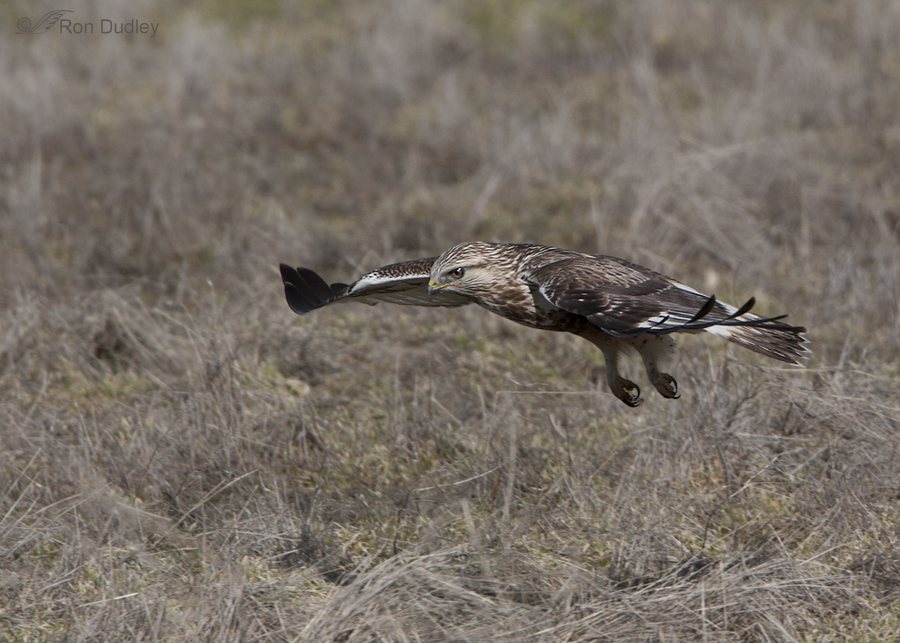
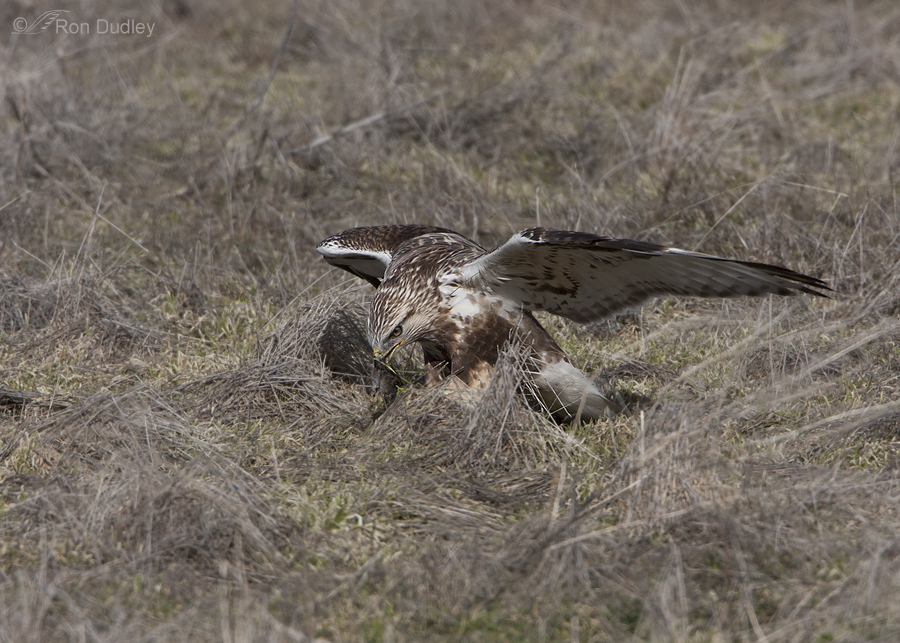
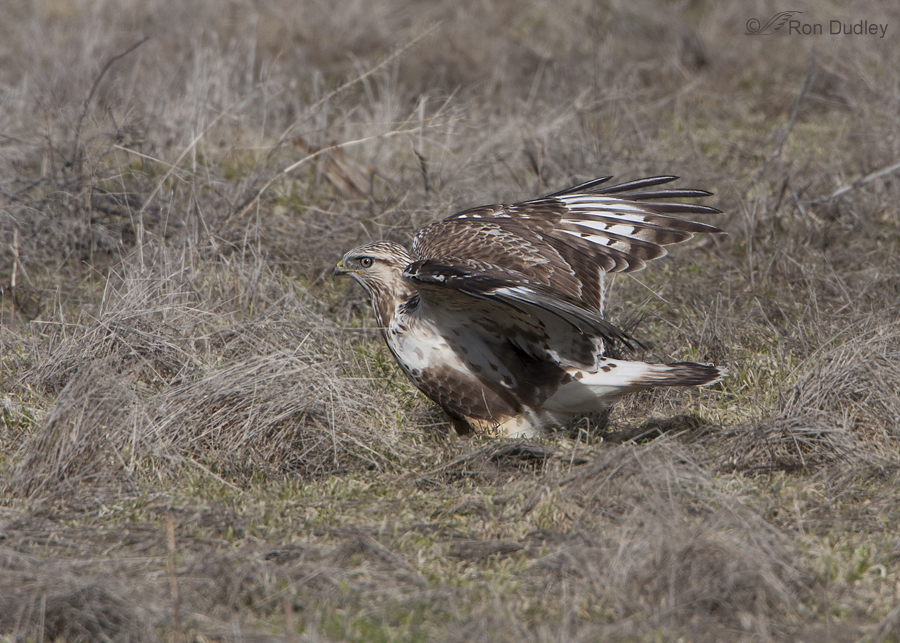
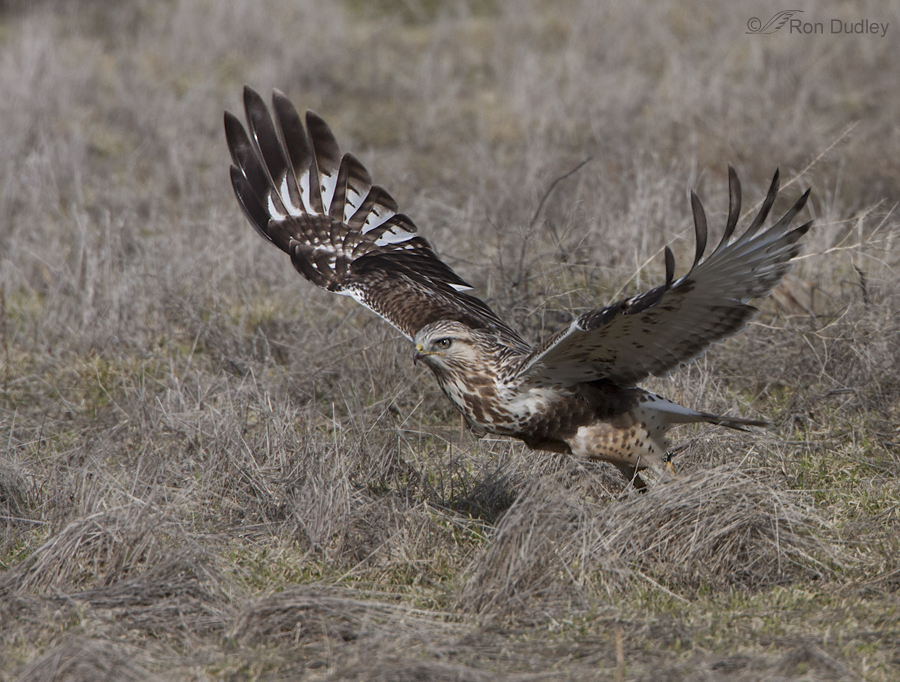
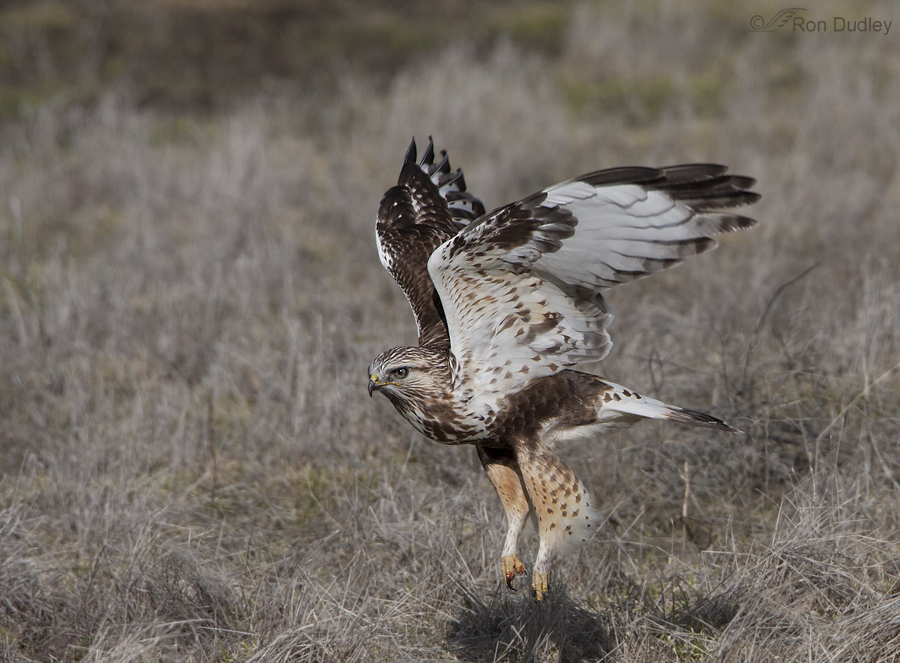
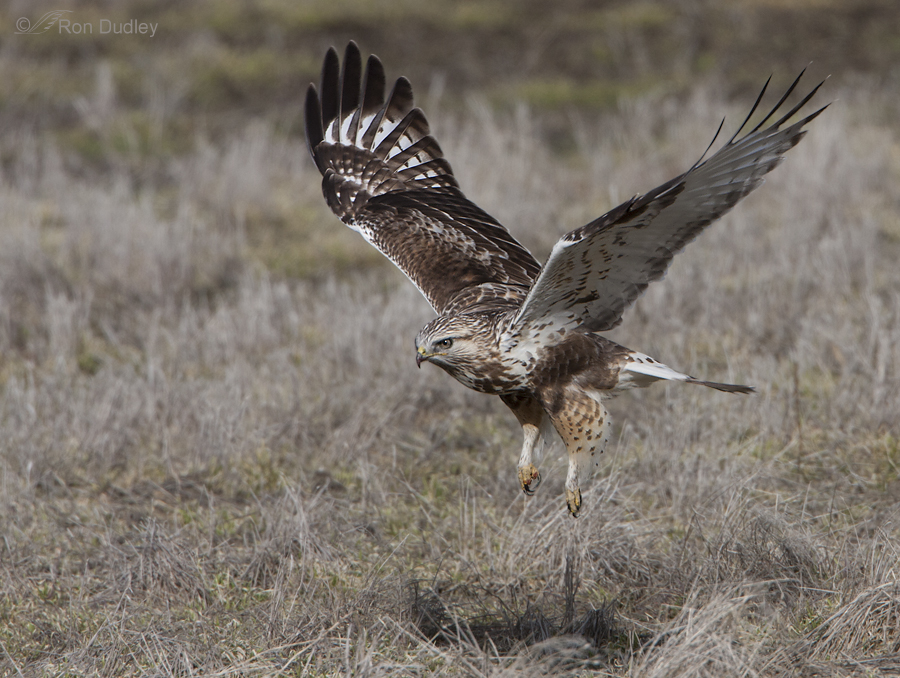
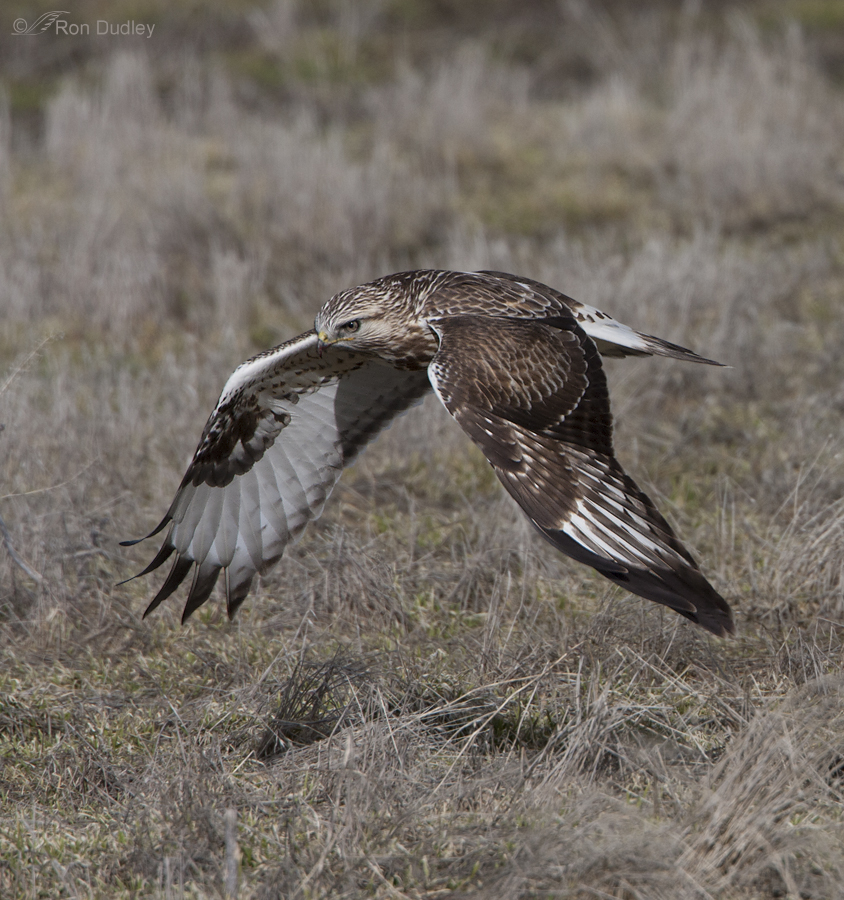
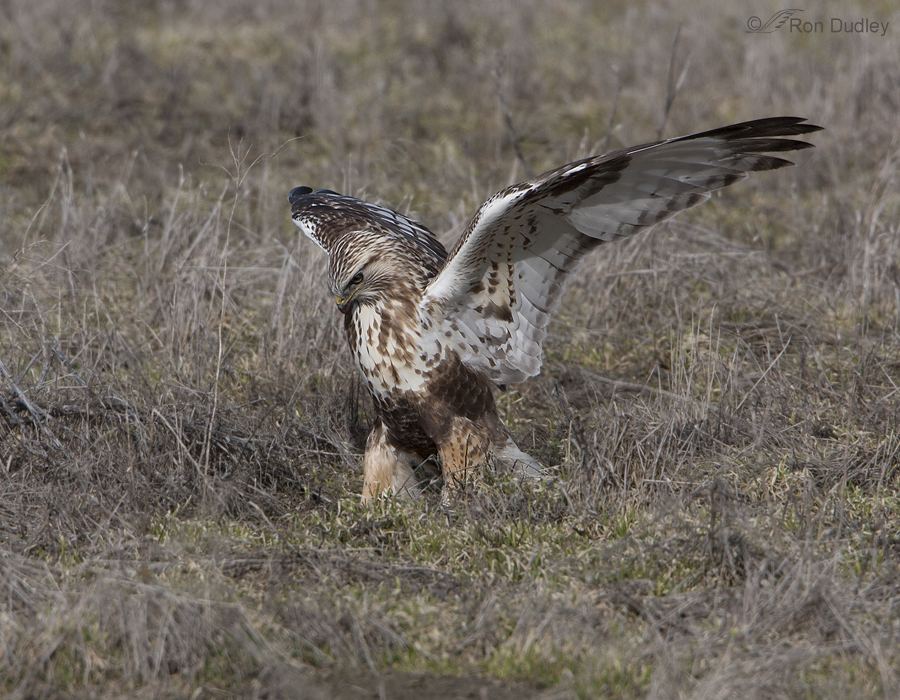
It was actually thrilling for me to view this amazing sequence of this beautiful hawk. I considermyself very lucky to have seen one fairly clos-up on the ground with prey for less than a minute. It was a sight I cherish all the more because it brought me to your site which is like having Christmas come every day. Thank you Ron.
Terrific shots and most interesting commentary. The low, short flights reminded me of the short flights and dives of Brown Pelican when fishing a localized area. However, the pelicans seem to make a bigger splash.
A fascinating twenty-one minutes. And again – I love the britches. Perhaps having had success hunting this way in the past, it continues. And it would certainly not give the voles a lot of warning.
Thank you – yet another wonderful sequence.
Great series of photos!! I love those feathery legs they have!!! Such handsome/beautiful birds… What is the purpose of voles, other than to be prey for raptors?
What an interesting dialog and beautiful shots!
Hunting tactics in raptors is so fascinating to me. Thanks for the insight Ron.
You’re like me, Bryce – we’re both enthralled by behaviors.
Great series, Ron. I’ve seen red-tails do the same thing out here in the Willamette Valley of Oregon, where many hawks tend to winter and can be found up and down the highways, hunting like this in the median and the roadsides. We get concerned calls from commuters who are insisting a hawk is injured because they’ve seen him in the same place, on the ground, for several days. So we go out, pull over, and watch the bird, it flies 10′ feet and catches a vole, looks around, flies another few feet, etc. Unfortunately, roadsides provide good prey habitat – with usually a ditch for water, a fence for hedgerow cover, and grasses that only get mowed a couple of times, so they go to seed for food … not to mention what folks throw out of their cars. Dangerous place but can be good hunting.
Louise, I’ve seen similar behavior from Red-tails but this was a first for me with roughies.
Wow! What a wonderful series of photos. If I didn’t know better I’d think the bird was posing for you in the first few photos. These photos really show off the extraordinary beauty of this hawk, and allow me to feel like I was almost there with you watching its behavior.
Thanks, Susan. This bird pretty much ignored me the entire time I was with it. It was sure more intent on its hunting than it was on me.
What a great sequence. Ron I was atracted to your emails through Arthur Morris and I really like your sequence of photos and explanations it is very much how I think and shoot with much the same equip. do you have a place or could you outline for me how you crop and sharpen your photos and do you shoot RAW and what program you use to mange your files. and the many other questions I have of how you work after the shot….. When you get time Keep up the great posts they are inspiring
Thomas Mast
Thomas, I shoot RAW, exclusively. Unless it’s simply a documentary shot I don’t crop to less than 50% of the original image to preserve image quality (and I prefer a much smaller crop than that). None of the images in this sequence was cropped over 50%. I crop, sharpen and do all of my processing (which is kept to a minimum) in Photoshop CS6. I use PS Elements as my organizer.
Thanks for sharing what you do Ron I apreciate it
Another WOW for me. I’m blown away by the perfect exposure, the detail and sharpness of your work. I hope your being very rewarded by your talented work. I don’t think I have ever seen better.]
Keep up the good work!
I appreciate the compliment, Mike. Thank you. Most of my reward is the images themselves. That plus the time I get to spend with birds, of course…